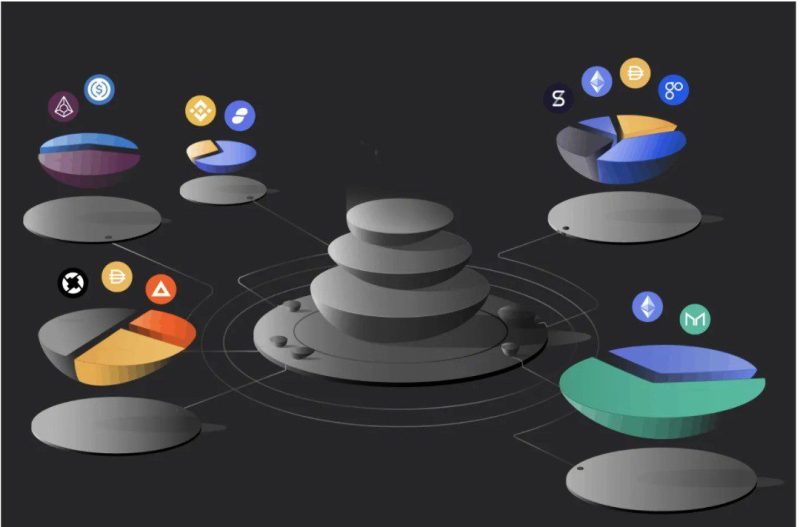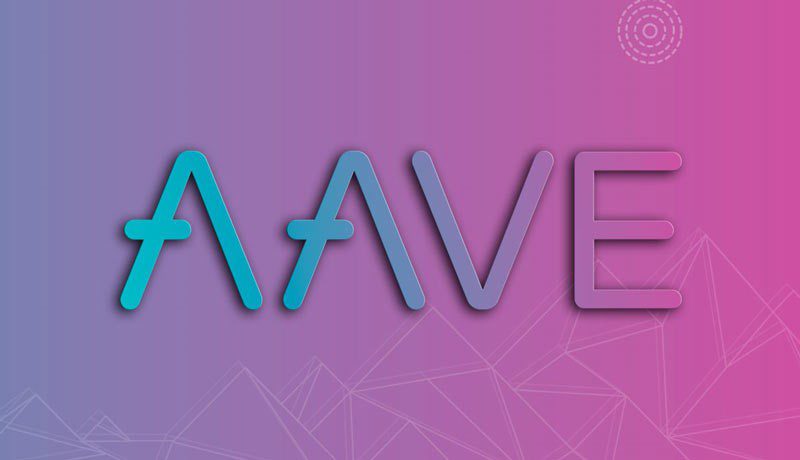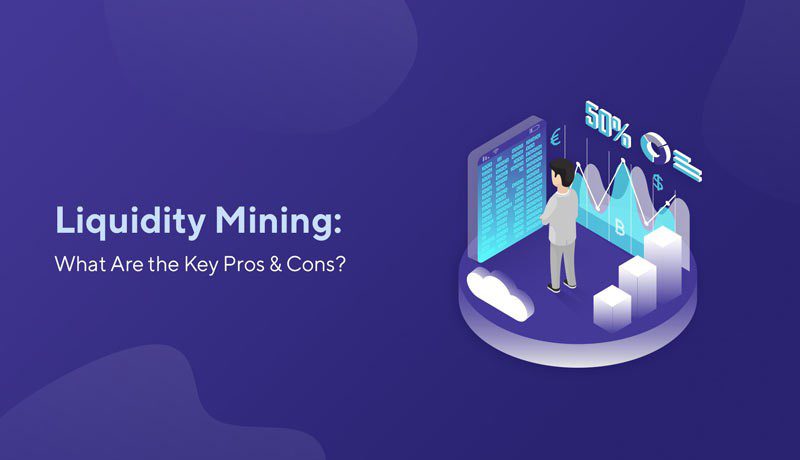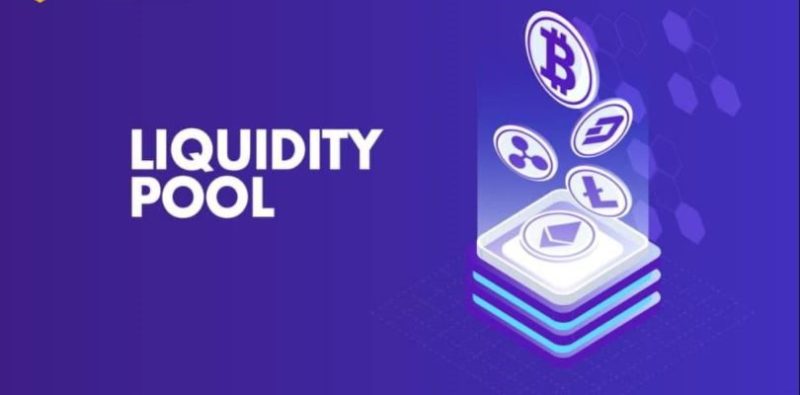Liquidity mining is a strategy that some decentralized finance protocols (DeFi) use to attract users. With this strategy, they encourage users to inject liquidity into their desired protocol and, in return, distribute protocol-specific tokens (governance tokens) to users. By HODLing these tokens, users gain governance power in the protocol or can exchange the tokens with other cryptocurrencies for profit.
In general, liquidity mining is a very interesting way to attract capital and investors, and at the same time, it has completely revolutionized the world of DeFi. But what exactly is the strategy of DeFi liquidity mining, and how does it work? In this article, we will answer the questions.
DeFi liquidity mining means that a protocol allows users to receive rewards if they deposit and lock their capital in the desired platform. Rewards in the liquidity mining strategy are generally paid in the form of governance tokens.
Also Read: How Does Helium Mining Work?
Contents
- How is Liquidity Mining and Liquidity Provider Work?
- What is the Purpose of Liquidity Mining?
- What Are the DeFi Platforms that Provide Liquidity Mining?
- Advantages and Disadvantages of Liquidity Mining
- What Are Liquidity Pools and How Do They Work?
- Conclusion
- FAQ
How is Liquidity Mining and Liquidity Provider Work?
Decentralized exchanges (DEX) are always looking for new users who can inject capital into the platform and reward them for this contribution. Currently, most decentralized exchanges replace their on-platform orders with Automated Market Makers (AMM) that follow all trading regulations.

Automated market makers enable token swapping, which enables the trading of one token for another in a liquidity pool. When users decide to register a transaction, they must pay a certain trading fees. The market maker then collects the trading fees and rewards and when a user pays a fee to swap two tokens on the DEX, the liquidity provider is rewarded for providing the necessary liquidity to complete the transaction.
What is the Purpose of Liquidity Mining?
Why is liquidity mining so important in DeFi platforms? Liquidity mining is a way to encourage investment and inject liquidity into decentralized finance platforms. By investing in the liquidity mining process, Liquidity Providers (LPs) receive rewards for their participation, which are generally given in the native token of the platform.
These tokens are generated on a protocol-specific schedule and distributed to liquidity providers as part of their rewards. While most of these tokens are useless outside the DeFi platform that produces them, the creation of exchange markets and speculation around these tokens make their value rise, and people are eager to trade them. Liquidity mining pursues two goals:
- Token distribution among investors improves their position and profitability on the platform.
- The offering of governance tokens creates a starting point in the market.
Liquidity mining allows liquidity providers to enter or exit capital and sets a minimum value for the governance token. Then, even though the tokens have no external value at the beginning, the rest of the process of adding value in the market supply and demand process is formed and carried out by itself.
What Are the DeFi Platforms that Provide Liquidity Mining?
Among the platforms that offer liquidity mining, the following can be mentioned:
- Compound: where liquidity providers earn COMP tokens for their participation. These tokens can be exchanged in in-platform or other centralized or decentralized exchanges to profit from their trade with different cryptocurrencies.
- Aave: is another project where liquidity mining can be implemented, which is possible due to the recent update of this protocol. Converting the ETHLend token (the old token in the protocol that was a subset of Aave) to the new AAVE token will bring better returns and more profit to the holders.

- Balancer: A project that has adapted its protocol to this strategy by launching the BAL token, a governance token that enables liquidity mining on the platform.
- Curve Finance: has placed all its operations and profitability on the platform based on liquidity mining along with a decentralized yield farming system that is applied in creating a liquidity pool for other protocols (such as Compound or Uniswap). The goal of this strategy is to maximize profit and consider that Curve only works with stablecoins.
- Uniswap: This platform is the premier decentralized exchange (DEX) in the DeFi world. Its development team has introduced the UNI token for liquidity mining.
- Yearn Finance: It is a famous project that combines yield farming and liquidity mining in one place, and its governance token has become valuable in the DeFi market.
Advantages and Disadvantages of Liquidity Mining
Advantages of Liquidity Mining
Liquidity mining has created a sudden and drastic change in the world of cryptocurrencies and has proven itself as an important and decisive tool that can provide many different functions. In the following, we introduce and explain each of them.
- Motivational factor and attraction – Mining liquidity is a motivational factor and a great attraction for investors. In general, offering rewards for participating in platforms attracts much attention from investors, especially if these rewards mean making big profits.
- Lending and profitability – The platform's growth leads to higher profits and prosperity in the sector. Liquidity mining platforms can multiply the investments made on this platform in a very short period. In addition, if the platform also provides the possibility of lending, you can invest in the same platform or another platform (using yield farming), and this issue will cause more growth.

- Maximum participation and decentralized – Most of these protocols are completely decentralized or highly decentralized so that anyone can participate in them, and there is no limit to participating in them.
- Improving liquidity – The liquidity of financial resources is one of the vital elements of liquidity of the entire economic system. Unlike conventional industries, the field of DeFi does not have a self-made capital pool that guarantees the existence of liquidity. Designing a sustainable and decentralized pool of financial resources along with a comprehensive user incentive through an interest rate mechanism that creates more liquidity has become the main and most important goal of DeFi projects.
- Advancement of the price discovery process – Due to the rapid and extensive development of blockchain technology, many projects have been launched that liquidity mining can unite in one dimension. This technology can speed up the periodicity of trading value and thus make price discovery for each crypto assets better and faster. Price discovery is the traders' understanding of the supply and demand situation of that market and their expectation of future opportunities in the market. Liquidity mining can increase resource allocation and even allow investors and various financial institutions to make more rational decisions based on price.
- More effective advertising strategy – Liquidity mining is practical and useful in attracting news coverage and more awareness about a particular product. Of course, the entire advertising campaign must be carefully managed to ensure that the funds obtained from liquidity mining are spent on something other than this purpose.
- Wider and Fairer Distribution with Fewer Barriers – One of the significant advantages of liquidity mining is that retail traders and investment institutions have an equal opportunity to own tokens specific to a particular protocol. This advantage is undoubtedly important for investors who have previously wanted but have yet to have the opportunity to participate in a DeFi ecosystem.
Disadvantages of Liquidity Mining
However, not everything is so simple, and there are disadvantages to this strategy:
- Requires basic knowledge – Liquidity mining platforms are hard to use, and they are very technical. If investors do not have basic knowledge about financial instruments, they may face many challenges.
- High network cost – Most liquidity mining platforms are rooted in the Ethereum blockchain. Its massive growth (along with the DeFi ecosystem in general) has pushed the network to its full capacity. DeFi transactions on Ethereum are not cheap at all, and a huge network fee must be paid for each transaction.
- High risk – on the other hand, if the users do not consider some aspects related to the activity in this area, such as the commission fee, collateral indicators, and the price fluctuations of cryptocurrencies in the market, they may end up losing their money and capital. In general, liquidity mining platforms (such as yield farming) are subject to high volatility.
- Security of smart contracts – Liquidity mining platforms also face a serious problem with security.
Also Read: What Are Gold Mining Stocks and How to Choose the Best Gold Stocks to Buy
What Are Liquidity Pools and How Do They Work?
What is a Liquidity Pool?
Currently, there are two types of decentralized exchanges available on Ethereum. The first type is peer-to-peer exchanges with an Order Book, which include 0x exchanges such as Radar Relay. The second type of these decentralized exchanges is liquidity pool exchanges, which include Kyber, Uniswap, and Bancor.

Exchanges with an order book rely on a bid-and-ask system for trading. The engine of these exchanges identifies and connects buyers and sellers who match the price. This system is very suitable and works well in high liquidity. But it is very difficult to trade assets with low liquidity in this system. A liquidity pool addresses this problem, eliminates tokens' dependence on trading volume, and ensures constant liquidity for these tokens.
What Is the Use of Liquid Pools?
Investors can place their tokens without the need for an intermediary, just by using the smart contracts system, and receive transaction fees for placing the token in the liquidity pool or trade your tokens directly. The task of the liquidity pool is to provide the necessary capital and assets for decentralized exchanges.
Aggregation of deposited funds in a pool can act as a substitute for voting tokens in a protocol. Liquidity providers can effectively decide the protocol for which they have provided liquidity by acquiring governance tokens native to the platform and using them to participate in voting.
How to Join a Liquidity Pool?
The process of accessing liquidity pools varies slightly from platform to platform. While some are more technical and require more expertise, others have become very user-friendly. To join a liquidity pool, you need to create an account on the platform of your choice and connect with a smart contract-supported wallet such as MetaMask.
Next, you must choose a currency pair and liquidity pool to deposit your crypto asset. Next, you must ensure you have enough balance for both assets you want to deposit. You add liquidity to both trading sides, and finally, you get your LP tokens.
Decentralized exchanges operate many liquidity pools on various blockchain networks. The first protocol was Bancor, which laid the basis for developing this concept. On the Binance blockchain, PancakeSwap is the most popular, while on Ethereum, various exchanges like SushiSwap, Uniswap, Balancer, Curve, etc.
What Factors Depend on Making a Profit in a Liquidity Pool?
The profit depends on the asset price at supply and withdrawal, pool size, and trading volume. Trading activity can change the price and quantity of assets in the pool. Investors will withdraw a different proportion of assets than what they initially deposited.
Because it is necessary to provide an equivalent value of two assets, large price changes between the time of supply and withdrawal of an asset can lead to losses. Therefore, investors' profit is variable and will depend on the mentioned factors.
What Is the Future of Liquidity Pools in DeFi?
If you've been wondering where to invest your crypto holdings, DeFi is a growing sector with many great options. Although becoming a liquidity provider can be risky, on the other hand, it can offer a wide range of use cases, including decentralized trading, profit cultivation, lending, and many others, along with creating new avenues in the DeFi landscape.
However, they carry risks such as permanent losses and over-reliance on smart contracts. In the long run, the DeFi ecosystem solves problems with new and complex solutions. Many more uses for liquidity pools have yet to be discovered, depending on the DeFi developers.
Conclusion
Liquidity Mining has gained popularity due to its leaps in technology and features and has attracted the attention of DeFi activists. Liquidity pools are one of the core technologies and foundation of the DeFi decentralized financing system. These pools allow users to trade, lend, generate profits, and more. These smart contracts cover almost all parts of the DeFi network.
This article presented extensive information about the operation mode, purpose, platforms of the provider, and the advantages and disadvantages of liquidity mining. Also, what and how liquidity pools work and how to earn a profit are the most important issues raised in DeFi.
FAQ
1. What Do Liquidity Providers Do?
Accordingly, when a user pays a fee to swap two tokens on the DEX, the LP is rewarded for providing the necessary liquidity to complete the transaction.
2. What Is the Purpose of Liquidity Mining?
The distribution of tokens among investors and the presentation of governance tokens are two goals of liquidity mining.
3. What are the DeFi Platforms that Provide Liquidity Mining?
Compound, Aave, Balancer, Curve Finance, and Uniswap are among the most important DeFi platforms that provide mining liquidity.
4. What are the Most Important Advantages of Liquidity Mining?
The motivation factor and attractiveness, lending and profitability, and maximum and decentralized participation are the most important advantages of liquidity mining.
5. What is a Liquidity Pool?
Liquidity pools of crypto assets are stored to facilitate the exchange of major exchanges on decentralized exchanges. Liquidity pools are stocks of tokens secured in smart contracts and provide liquidity to exchanges.
6. Are Decentralized Exchanges Safe and Secure?
A good way to measure the security of a smart contract is to look at the value of the funds locked in the contract. If a significant amount of assets are stored in a smart contract, that contract will likely be secure.

















